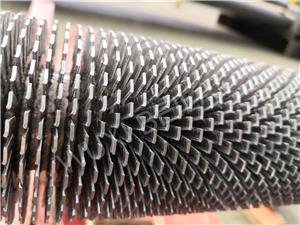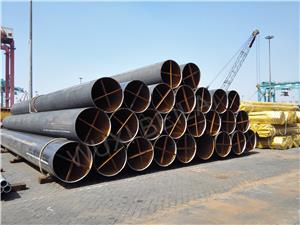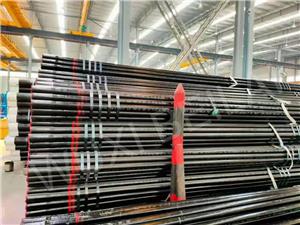Optimizing Large Diameter Line Pipe for Enhanced Performance and Longevity
Large diameter line pipe is a critical part of the global energy network, acting as the primary channel for transporting crude oil, natural gas, and refined petroleum products across vast distances. Due to the demanding environments in which these pipelines operate—ranging from highpressure systems to corrosive soils and extreme weather—it's essential to choose the right materials, manufacturing processes, and maintenance strategies to ensure safe and efficient operation.
Core Characteristics of Large Diameter Line Pipe
The performance and reliability of large diameter line pipes rely on several key features:
1. High Tensile Strength
These pipes must withstand significant internal pressures without deforming or failing, especially in highpressure applications.
2. Exceptional Corrosion Resistance
Constant exposure to moisture, chemicals, and temperature fluctuations requires the use of corrosionresistant materials and protective coatings.
3. Seamless or Welded Construction
Seamless pipes offer superior durability and are preferred in critical, highstress environments.
Welded pipes—produced through methods like Electric Resistance Welding (ERW) or Submerged Arc Welding (SAW)—are more economical and ideal for moderate to lowpressure systems.
4. Customized Specifications
Pipes are designed and manufactured according to globally recognized standards such as API 5L, ASTM, and ISO to guarantee safety, performance, and compatibility.
Types of Large Diameter Line Pipe
1. Seamless Large Diameter Line Pipe
Created without any weld seams, offering enhanced mechanical strength and reliability.
Ideal for highpressure, highstress applications.
2. Welded Large Diameter Line Pipe
Made using ERW, SAW, or other welding techniques.
More costeffective and suitable for lowerpressure uses, such as water or gas distribution.
3. Coated Large Diameter Line Pipe
Pipes are coated with protective layers like polyethylene (PE), fusionbonded epoxy (FBE), or 3layer polyolefin.
These coatings significantly reduce the risk of corrosion and extend the pipeline’s service life.
Applications of Large Diameter Line Pipe
Large diameter line pipes are used in a broad range of environments, both onshore and offshore, and are central to numerous industrial processes:
Crude Oil Transportation
Carrying unrefined oil from drilling sites to refineries.
Natural Gas Transmission
Delivering natural gas through regional and crosscountry pipeline networks to power plants, cities, and industries.
Refined Product Distribution
Moving products like gasoline, diesel, and jet fuel to various markets.
Subsea Pipelines
Specially designed to handle the harsh conditions of deepsea environments.
Factors Influencing Pipeline Durability
Several factors determine the lifespan and performance of large diameter line pipes:
Environmental Exposure
Harsh climates, soil types, and marine conditions can accelerate wear unless properly protected.
Steel Quality
Highquality steel offers better mechanical and chemical resistance, ensuring longterm stability.
Protective Coatings
Advanced anticorrosion coatings reduce the effects of moisture, chemicals, and abrasion.
Regular Inspection & Maintenance
Proactive monitoring and timely repairs help detect early signs of degradation and prevent costly failures.
Compliance with Industry Standards
To ensure safe and efficient pipeline operation, manufacturers must adhere to strict regulatory guidelines and quality benchmarks:
API 5L – Specification for line pipe materials used in oil and gas transport.
ASTM A53/A106 – Standards for carbon steel pipes, mainly for hightemperature services.
ISO 3183 – International standard for petroleum and natural gas industry pipelines.
DNVOSF101 – Offshore standard covering submarine pipeline systems.
Emerging Trends in Line Pipe Technology
As the oil and gas industry evolves, so does the technology surrounding pipeline manufacturing. Several innovations are shaping the future of large diameter line pipes:
HighStrength Steel Grades
Newer steel types allow for thinner walls while maintaining structural integrity, reducing overall weight and cost.
Advanced Coating Technologies
Selfhealing and nanoengineered coatings provide superior corrosion resistance and longer service life.
Smart Pipeline Monitoring Systems
IoTenabled sensors and AI algorithms enable realtime health monitoring, leak detection, and predictive maintenance.
Sustainable Manufacturing Processes
More manufacturers are adopting environmentally friendly production methods to reduce their carbon footprint.
Large diameter line pipe is an indispensable element in the world’s energy supply chain. Its ability to safely transport vast volumes of oil and gas across challenging terrains makes it a cornerstone of modern infrastructure. Selecting the right type of pipe, ensuring compliance with stringent standards, and investing in advanced coatings and monitoring systems are essential steps toward minimizing risks and maximizing operational efficiency.
As the industry continues to embrace innovation and sustainability, large diameter line pipe technology is expected to become even more reliable, efficient, and environmentally friendly. Companies that stay ahead of these developments will not only enhance pipeline safety and performance but also secure their place in the future of energy transportation.




